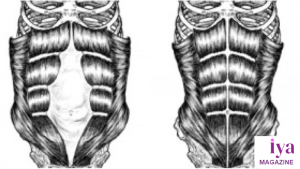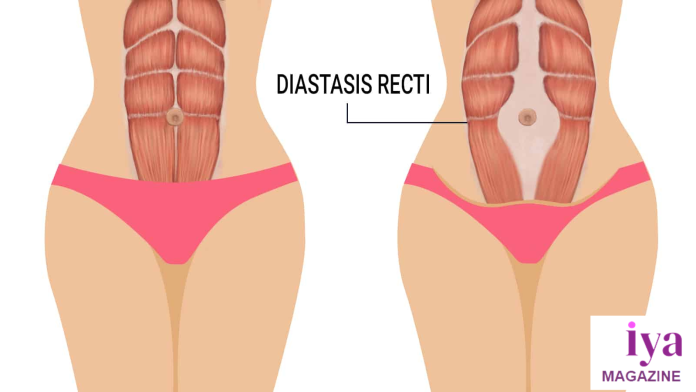Pregnancy changes you as a woman. Your body pushes to accommodate your growing baby, and one of the major changes is the expansion of your stomach, that is the abdominal muscles.
For some women, things go right back to normal; for others, it seems as if there is a wide gap around the abdomen. This wide gap is known as diastasis recti, and it can be ‘repaired’ using exercise.
When you have a significant abdominal separation after pregnancy, it is important that you know the types of exercises to use, or else you could be doing more damage than good.
Here, we will be talking about testing for diastasis recti and some of the top exercises that can help you get your shape back.
Diagnosing diastasis recti

So, before going into the exercise itself, you want to be sure that you are experiencing diastasis recti. Here are some of the steps you need to take:
• Relax by lying on your back with your legs bent and your feet flat on the ground.
• Lift your chin off the floor and contract your ab muscles to feel the indentation in your stomach right in the middle.
• It is best to begin at the navel and move up and along the vertical line. It’s possible that you have abdominal separation if you can press your fingers down and feel some space.
If the gap between the abdomens is small, things might go back to normal with time. However, if there is a large separation, it definitely is serious diastasis recti, and this requires exercise.
Exercises that can fix diastasis recti

Diastasis recti can be healed by strengthening the abdominal muscles from the inside. The deepest abdominal muscle, the transverse abdominis (TVA), needs to be strengthened so that it can help support the more superficial abdominal muscles that have been stressed.
Here are some simple exercises for diastasis recti:
Pelvic tilts on hands and knees

• Get down on your hands and knees, maintaining a neutral spine.
• Draw your belly button in toward your spine and take a deep breath in through your nostrils. As you exhale, curl your spine into a Kegel.
• Breathe in as you come back to the center. You should avoid tensing your buttocks and instead initiate movement from your lower abs. When dealing with severe diastasis recti, it’s not a good idea to assume the cow position.
• You should progressively perform 10 tilts.
Toe taps lying on back
• Lie on your back with your knees propped up on a table and your feet flat on the floor. Take care not to hunch your shoulders or tuck your pelvis.
• While keeping your core engaged and your pelvis in a neutral position, inhale into your ribcage and exhale as you strike your right foot on the floor.
• Breathe in as you come back to the center.
• 10 reps should be done on each side.
Single leg reach lying on back
• From tabletop, reach your right leg long on a high diagonal as you exhale while keeping your pelvis stable.
• Breathe in as you come back to the center.
• Go ahead and do 10 reps on each side.
Bottom line
There are loads and loads of exercises that can help with diastasis recti. However, these are some of the best to start with. As time goes on, with good results, you can take on more complicated routines until you are satisfied with the appearance of your abdominal muscles.


